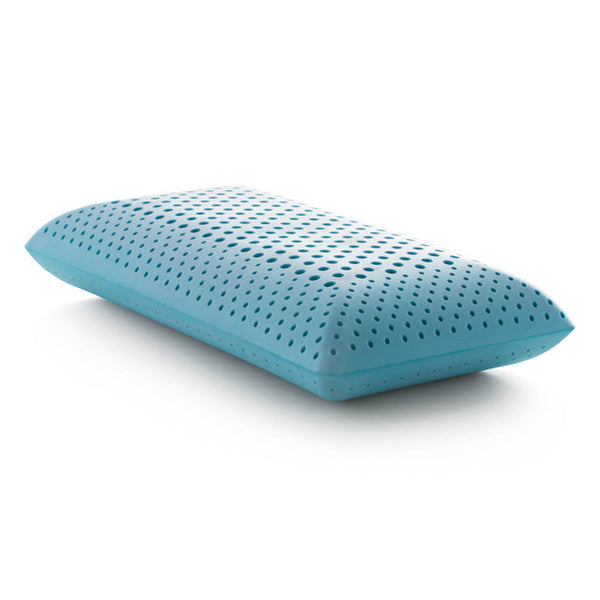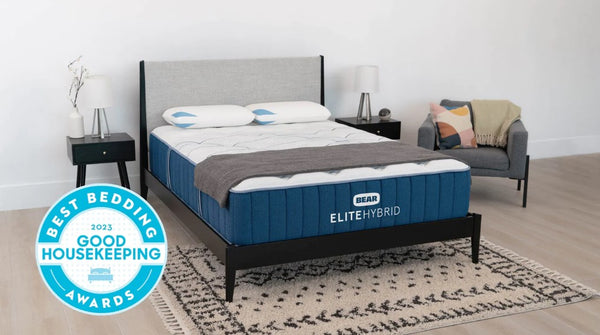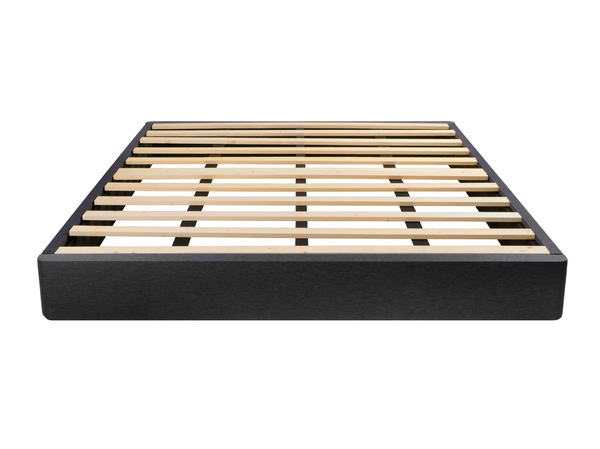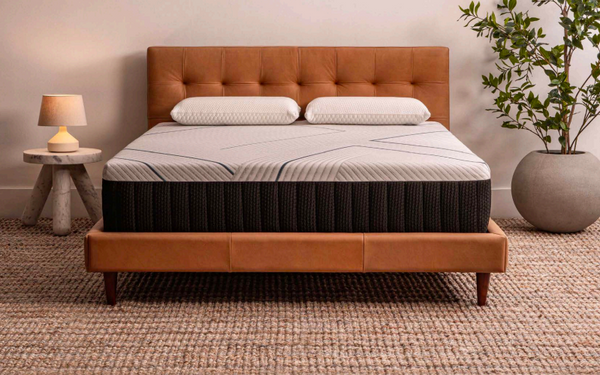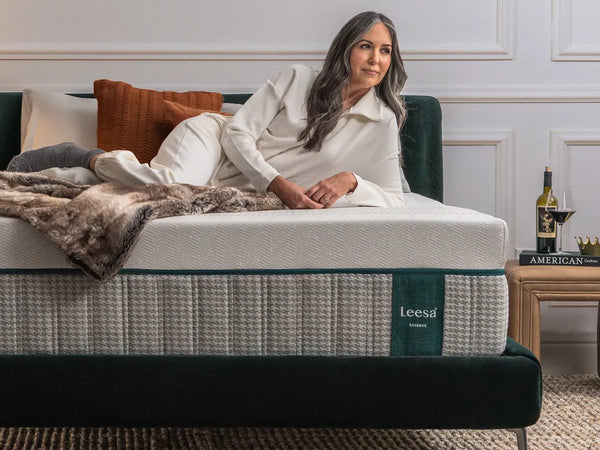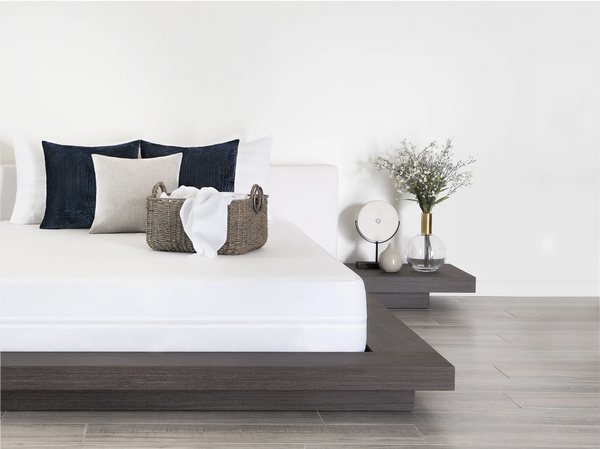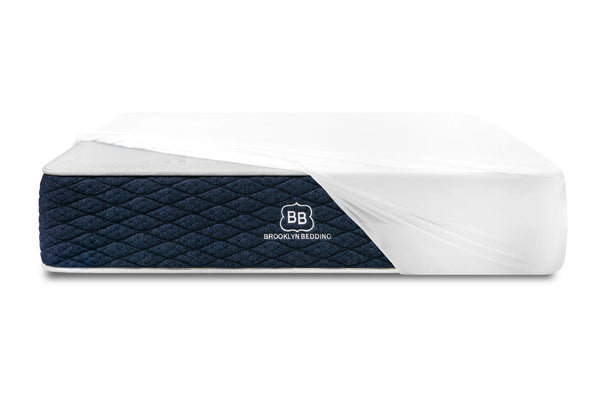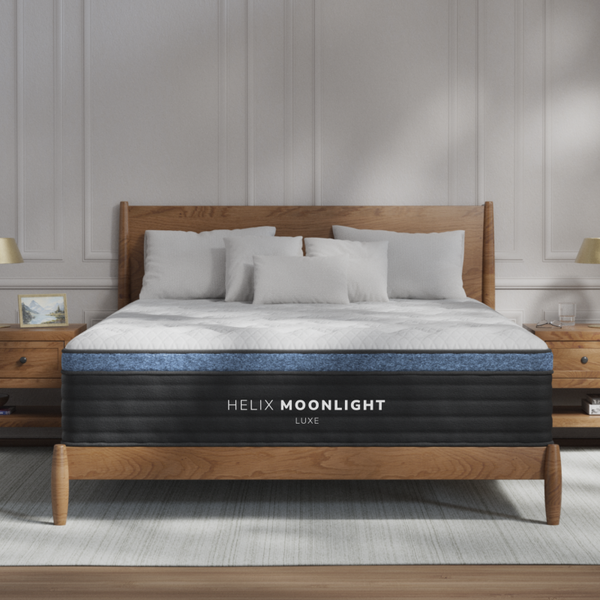
Sleeping in a cool room causes your core body temperature to decrease and stimulates melatonin production for deeper sleep, leading to improved quality restful restful slumber. Therefore, mattress makers have developed innovative technologies designed to help users find an ideal temperature setting for sleeping.
These cooling systems actively draw heat out of your body during the night using either water or air, then release it back out again to keep you cool and relaxed while sleeping. Continue reading to discover 8 heat busting techniques mattress manufacturers employ to help ensure cool nights:
1. Airflow
When it comes to heat regulation, breathing space in a mattress or mattress pad is one of the key elements. A mattress made with materials that allow airflow (such as cotton, linen and bamboo-derived lyocell) can help ensure you remain cool all through the night.
Foam types in mattresses can have an impactful impact on its breathability; traditional memory foam tends to trap heat inside of it while latex and hybrid mattresses provide greater airflow through their airy layers. Foam infused with graphite, gel or charcoal may further increase breathability.
At an industry trade show we witnessed a mattress maker demonstrate just how easily air can flow through natural latex mattresses compared to memory and polyurethane foams. They used solid pieces from each mattress type and forced air through them while holding onto an open-ended tube holding a ping-pong ball; we observed the ball travel higher through natural latex than either memory or poly foam due to having more empty spaces within its structure that allowed hot air to escape and replaced with cool bedroom airflow.
2. Microcoils
Foam mattresses have long been known to trap heat, yet some companies take it one step further by adding contour cuts or grooves that increase airflow through contoured channels in their foam layers – creating channels within these foam layers which promote cooling and breathability, giving consumers better overall cooling and breathability.
Mattress manufacturers also rely on phase change materials as another cool sleep technology to keep their customers cool during the night. These materials absorb your body heat before releasing it at a lower temperature, keeping you cozy throughout your sleep cycle.
Many innerspring mattresses feature different kinds of coils to help evenly distribute weight and alleviate pressure points, including Bonnell coils, offset coils, pocketed coils and continuous wire coils. Each coil system may include variations such as Bonnell coils being connected and bonded together so they move as one unit; pocketed coils have individual wrappings made out of fabric sleeves and move only when pressure is applied – this helps the bed better conform to your body and reduces motion transfer for uninterrupted sleep for both partners.
3. Perforations
Material composition plays a large part in how well your mattress keeps you cool during sleep. One fabric that helps regulate temperature effectively is cotton; mattress brands often incorporate perforations designs in their cover designs to keep sleep temperatures optimal.
Some mattresses from Zenhaven and Novosbed feature latex models with pinholes formed naturally during production; this creates more breathability while helping regulate your body temperature more easily.
Other mattress brands utilize contour cutting on their foam surfaces to increase airflow and cooling, such as Casper using “egg crate” cuts which create space and channels for heat distribution, or Luxisleep using foam surface convolutions (peg-like cuts that make the bed feel cooler), cutting methods, or foam surface convolutions as part of its cutting techniques to increase airflow and cooling.
Temperature-regulating techniques may help, but they cannot solve all sleepers’ hot sleep issues. That is why many opt for hybrid mattresses with both springs and foam layers, which allow more surface area for airflow than all-foam mattresses.
5. Cooling Sheets
Cooling sheets help your body regulate its temperature for restful slumber. Crafted with breathable fabrics like cotton and silk, some even include cooling agents to wick away moisture, keeping you fresh and cool through the night.
To select the perfect sheets, it’s essential to consider fabric, weave and thread count. Avoid high thread count sheets that trap heat with their heavier heft; these could interfere with restful sleep. Instead, look for looser weave sheets which allow air released by your body to circulate more freely.
Look for sheets with 200-400 thread count or natural, breathable fabrics such as bamboo or tencel that wick away sweat to help cool you off while also preventing bacteria growth that causes odor and other skin irritations. Finally, choose easy care sheets so they can be washed without special instructions; that way you’ll enjoy them for years!
6. Lightweight Materials
Cotton mattress fibers not only promote cooling effects, but they’re also better at regulating temperature and increasing ventilation than their inorganic counterparts – which trap heat at night, leading to overheating that prevents restful sleep.
Foam mattresses tend to get hot because of a lack of airflow; some use perforations for breathability while other brands employ designs to increase airflow further.
Nectar, Muse and Bear use proprietary construction methods with non-woven fabric layers woven tightly enough together to form additional airflow channels for their memory foam products.
Additionally, another strategy for cooling mattresses involves using quilted covers made of high-quality, lightweight fabrics designed to wick away moisture and regulate body temperature – examples being Spindle, Zenhaven and Saatva which all use organic cotton with wool batting as opposed to Dreamcloud and Amerisleep which use hypoallergenic Tencel material.
7. Cooling Foam
Memory foam layers like those found on mattresses like the Layla mattress that contain copper-, graphite- or gel-infused layers help provide a temperature neutral sleeping environment by absorbing and dissipating body heat, keeping you cool while decreasing air conditioning costs and encouraging healthy circadian rhythms.
As opposed to regular foam, cooling gel conducts heat more slowly; Loom & Leaf uses cooling gel in their comfort layers in order to regulate sleep temperature while providing superior pressure relief.
Add open-celled foam to your mattress for an easier sleep experience by increasing airflow through reduced surface area, as this enables cool air to replace warm air that accumulates on it and replace it with cool. Plus, this type of material tends to be breathable so as to decrease night sweats!
8. Cooling Coils
An uncomfortable bed can impede your ability to fall into deep slumber, impacting not only sleep onset and quality, but also how long different stages take to pass by. Over time this could negatively impact immune function, memory retention and cause other medical conditions.
Mattress covers can have a major impact on how comfortable and cool your bed feels, although this doesn’t always happen. The best cooling mattress covers feature breathable materials that allow airflow.
Traditional innerspring mattresses account for 90% of mattress sales and provide unparalleled pressure relief and cooling properties. Some brands such as Amerisleep use microcoils within foam layers for enhanced breathability; Leesa Sleep uses both horizontal and vertical perforations patterns on their mattresses to further distribute heat distribution; these innovations enable these brands to offer cooler mattresses without sacrificing comfort.

